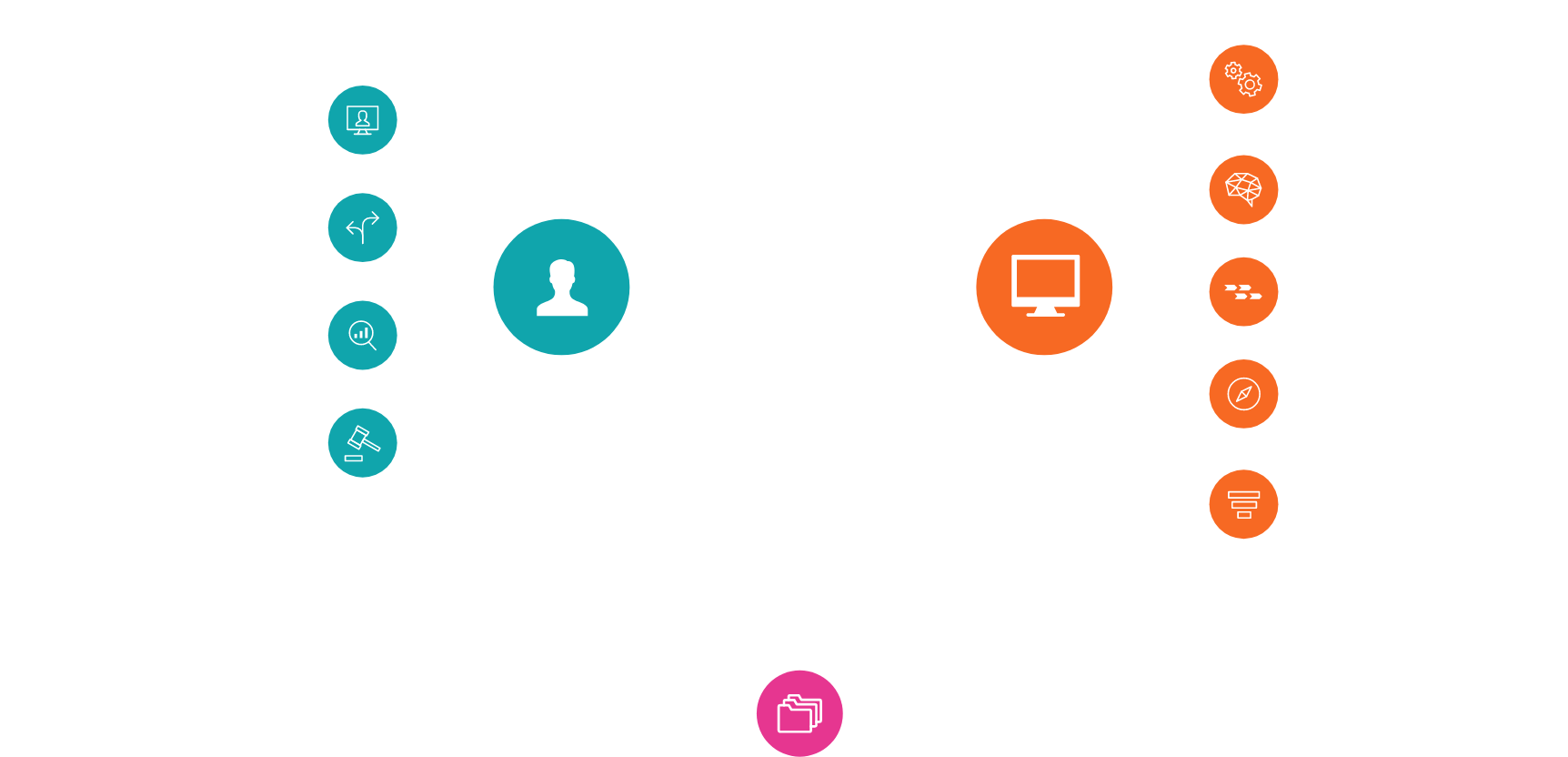
Case management
Drive better business outcomes with a software-based approach that orchestrates work from end-to-end

What is case management?
Case management is a software-based approach to helping people accomplish daily work and automating work from end-to-end. As the central concept of our low-code automation platform, the case is the epicenter and used to manage tasks, outcomes, and related sub-cases – all with the goal of completing a journey and delivering business outcomes.
How does it work for businesses?
Case management is a key component of building business applications. On an enterprise level, it manages complex human and machine work from start to finish – to deliver and drive outcomes that you and your customers demand. Plus, it’s capable of dynamically handling any exceptions to those intended outcomes along the way.
What is a case?
A case is like an electronic folder that includes all the tasks, documents, and data needed to complete a desired outcome. A case can:
- Retrieve the information you need
- Drive the processes you want
- Manage escalations and urgency
- Detect changes
- Make decisions to achieve an outcome
- Track work at every step

How to build your transformation team
Get the most value out of case management by getting to know the roles and responsibilities at its core.
Why use case management?
It all comes down to getting work done. Whether that’s orchestrating bots, connecting front and back offices, or accelerating your ability to scale through reuse, case management helps streamline operations to help employees be more productive and deliver experiences that customers demand.
When done right, case management empowers businesses to confidently manage complex work collaboratively across channels, devices, regions, and organizations, and positively impact ROI in the short and long term.
Benefits of case management
- Supports human and machine work. Integrated AI and natural language processing detect customer sentiment and intent, and extract data from inbound inquiries – all to fulfill requests easily and efficiently.
- Manages data and integrations. Take advantage of capabilities like robotic process automation by adding a bot to any case – so you can easily pull data or update existing systems.
- Enables collaboration. Agile tools allow stakeholders to provide application feedback and requirements from directly within the case, eliminating business–IT communication gaps.
- Supports low-code app development. Visual tools simplify business, professional, and IT development to get enterprise apps live, fast.
- Automates documentation. Maintains an audit trail of all activities within each case – in order to minimize compliance risk as well as streamline and automate required reporting.


How does case management work?
Essentially, a case represents work that an organization performs to achieve an outcome, such as recruiting a new employee. Lots of tasks and processes – whether planned or unplanned – may be performed to complete the work and deliver the outcome defined by the case.


Build business solutions intelligently
Understand how case management can help you boost productivity and empower your teams
Client case studies
See how businesses get work done with case management.
See how Siemens’ master data management app connects processes within a single platform
The Bureau of Alcohol, Tobacco, Firearms and Explosives consolidated legacy systems into a unified solution

How are cases different from processes?
Processes
- Employees rely on a well-defined and predictable set of information.
- The same or similar journey is followed to completion every time.
- Employees automate from end to end.
- Efficiency gains are maximized.
Cases
- Work is typically ad hoc and unpredictable.
- Employees managing work rely on diverse sets of information.
- The work itself is unstructured.
- The work can’t be fully automated.
- Cases require human decisioning to drive forward the outcome.

Orchestrate work intelligently with case management
Streamline enterprise workflows at scale, and fundamentally change the way work gets done
Frequently Asked Questions about case management


